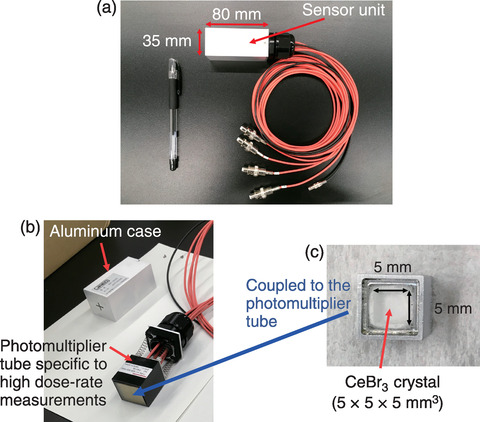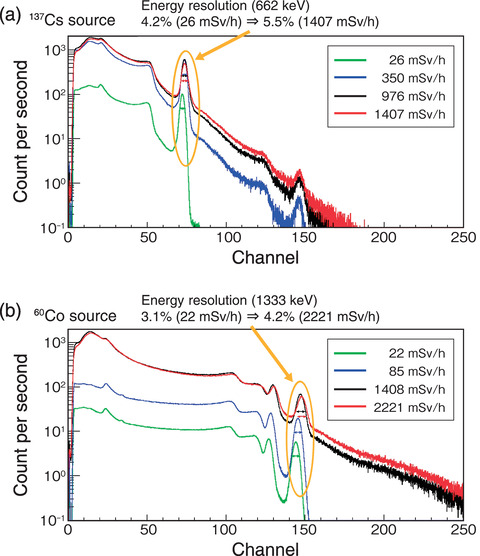
Fig.1-4 γ-ray spectrometry system specifically for high dose-rate measurements

Fig.1-5 γ-ray spectra
In TEPCO's Fukushima Daiichi NPS (1F), the preparation for the retrieval of nuclear fuel debris from the reactor pressure vessels, which is considered to be the most difficult process, is underway. The debris comprises mixed nuclear fuel and structural materials that melted at a high temperature and have since been solidified. Semiconductor detectors with radiation shielding are often used to measure high dose-rate nuclear fuels, including nuclear fuel debris. However, these instruments are large and cannot easily be used at 1F, where many buildings are damaged or under decommissioning. Further, high dose-rate operations require remote devices. Therefore, we developed a small, lightweight γ-ray spectral measurement system for high dose rates, as shown in Fig.1-4(a).
Scintillation detectors offer several advantages over semiconductor detectors at high dose rates; in particular, the CeBr3 scintillator provides a fast decay time (<20 ns) and good energy resolution (4% at 662 keV). A small volume (5 × 5 × 5 mm3) of CeBr3 was fabricated and encapsulated to prevent hygroscopicity, as shown in Fig.1-4(c). The developed scintillation package was coupled with a photomultiplier tube (or sensor unit, see Fig.1-4(b)) specifically for high dose rates, and a fast digital circuit was used to realize a high count rate and flexible pulse signal processing.
Next, γ-ray spectra were obtained at several dose rates under 137Cs and 60Co radiation fields to investigate the performance at high dose rates; the results are shown in Fig.1-5. (a) Under the 137Cs radiation field, when the exposure dose rate was ranged from 26 to 1407 mSv/h, the relative energy resolution at 662 keV was 4.2% at 26 mSv/h and 5.5% at the highest dose rate of 1407 mSv/h. (b) Under the 60Co radiation field, when the exposure dose rate ranged from 22 to 2221 mSv/h, the relative energy resolution at 1333 keV was 3.1% at 22 mSv/h and 4.2% at the highest dose rate of 2221 mSv/h. The energy resolution was high enough to identify the principle γ-ray spectral lines of 134Cs, 137Cs, 60Co, and 154Eu.
This research was done in collaboration with the University of Tokyo and the National Institute of Advanced Industrial Science and Technology. Our contributions will help realize the non-destructive assay of nuclear fuel debris, which will contribute to the safe and rapid decommissioning of 1F.
(Masaaki Kaburagi)